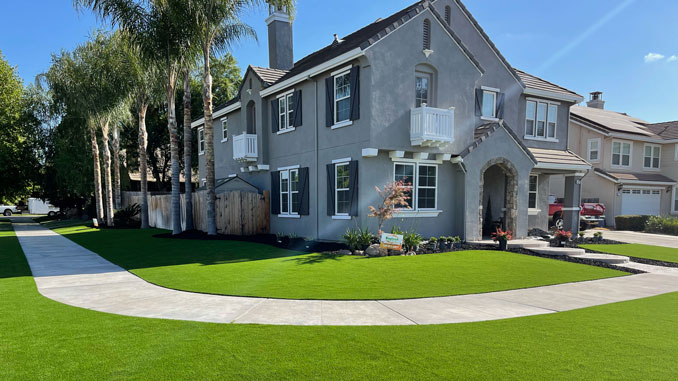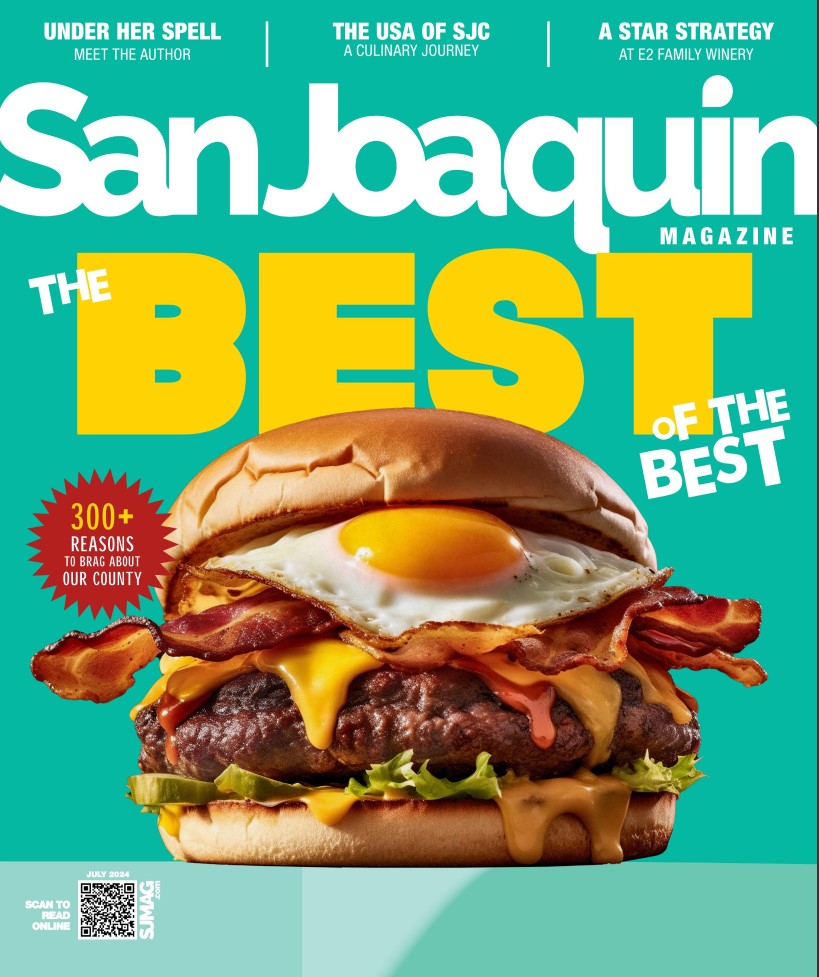
Perhaps you’ve considered synthetic grass before and been turned off by some of what you’ve seen or heard. When turf isn’t done right, the aesthetics can be off-putting, but with proper installation, faux grass can be a big benefit, requiring less watering and less maintenance. Beyond Grass is a residential division of American Sports Construction, headed by Josh Sarratt, a businessman with more than 20 years of experience working in sports fields. “I’ve been pretty much [a part of] every synthetic field in Northern California since 2004,” he says, mentioning bigger projects including fields for the Seattle Seahawks, Cal Bears, and Oregon Ducks. Needless to say, he knows his stuff—and he’s here to address some misconceptions about turf.
It looks fake.
One of the biggest complaints of turf is that it doesn’t look like real grass, but that isn’t really true. With a wide variety of different fibers and colorways that offer unique options for each homeowner, meeting needs for durability, aesthetics, and texture, is easy. “We have eight different types of products that we carry in our warehouse,” Josh says. And by combining them, homeowners can choose between dark green and lush to long blades with thatch that look most realistic. “There’s so many options now. It’s made for the consumer.”
It’s hot.
There is some truth to this. When rubber is used, turf grass will be about 15 percent hotter than natural grass because of the way the materials retain heat. However, opting for fiber and sand, which Beyond Grass uses more frequently, reduces that number by even more, so there is barely a noticeable difference between some products and natural grass.
It’s bad for the environment.
Something about synthetic materials lead consumers to believe they hurt mother nature. But it isn’t that cut and dry. While initial installation offers some carbon footprint, over the life of the lawn, homeowners significantly reduce water usage, reduce air pollution by skipping mowing and leaf blowing, and use less chemicals by ditching environmentally-unfriendly pesticides. Not to mention, some synthetic grass is made with recycled materials.
It’s expensive.
The initial price tag of turf can be high, but the money saved over time helps to offset the cost. Just think how much money you’ll save by spraying down your lawn a couple times a month instead of watering it two to three times per week. Not to mention the time saved on mowing, weeding, and edging and potential savings on landscaping. With turf, some weeds may pop up along the perimeter and need a quick pull, but the center of the grass will remain weed-free.
Beyond Grass
1318 Dupont Ct., Manteca
(209) 923-4817
BeyondGrass.com

